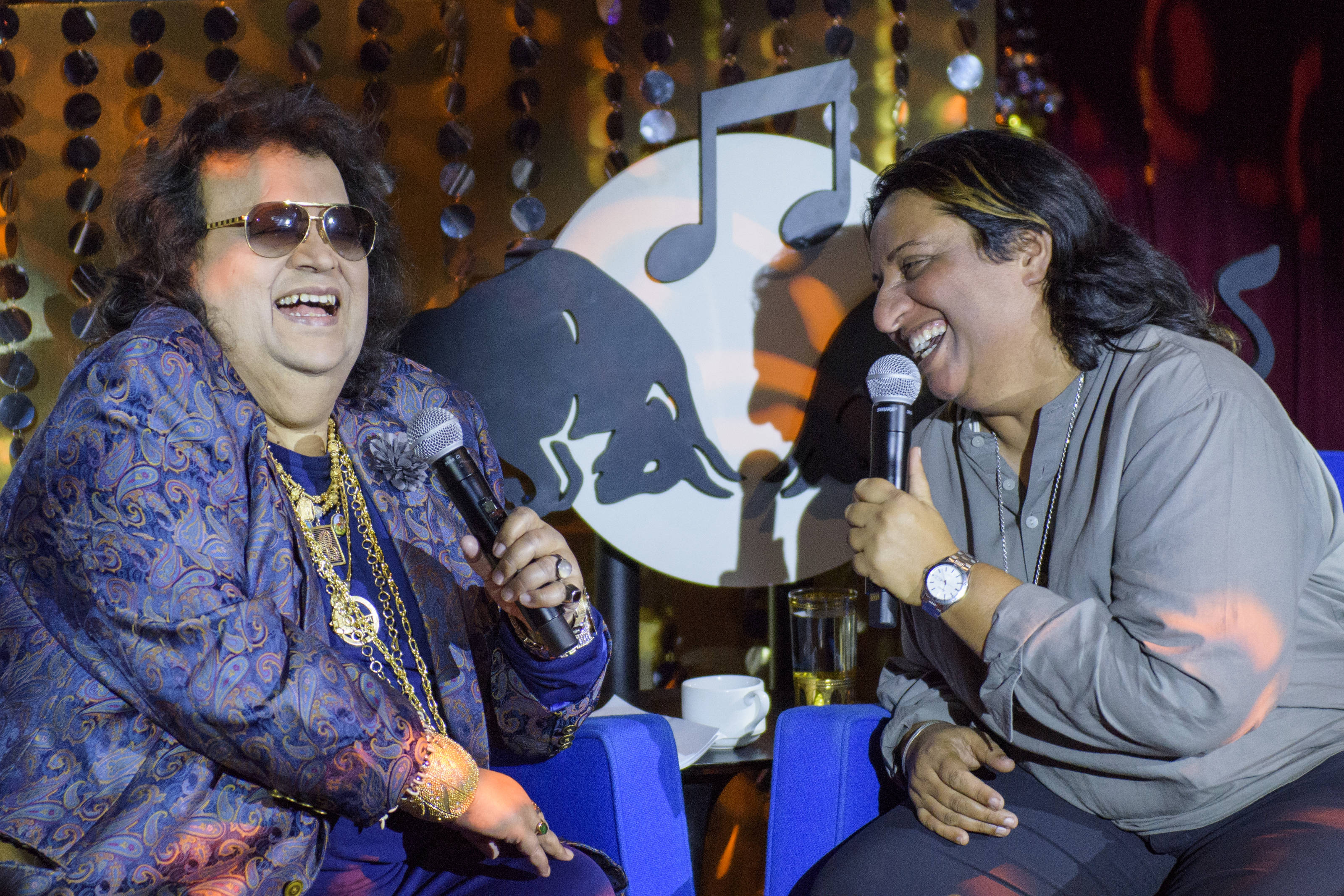A Brief History of Bollywood Soundtracks
Tracing the key composers and trends that shaped the Bombay film music industry
August 15th, 1947, the day India became independent, was a Friday. On that historic day, two Hindi films were released in Bombay. One disappeared without a trace – the other went on to become a musical milestone.
There has always been a symbiotic relationship in India between the success of a film and the popularity of its songs, and the P.L. Santoshi-directed Shehnai was no exception. The film was the fifth-highest grosser of the year, and a significant contributing factor in its favourable run at the box office was the stupendous popularity of “Aana Meri Jaan Sunday Ke Sunday” (Darling, Come To Me On Sundays), which heralded the arrival of jazz in the Bombay cinema.
To be sure, Western influences on Indian film music had been there from the very beginning. The live orchestras that accompanied silent films had a fair mix of Indian and Western instruments. Later, with the arrival of sound, when some of these musicians transitioned into music directors, this orchestral template was replicated. Through the 1940s, under music directors like Ghulam Haider [Khazanchi, 1941], Anil Biswas [Kismet, 1943], and Naushad Ali [Anmol Ghadi, 1946], the film song continued to make strides in sophistication, both in terms of its structure and orchestration. But with “Aana Meri Jaan Sunday Ke Sunday,” the Benny Goodman-inspired composer C. Ramchandra injected a dose of vitality and exuberance into Hindi film music, firmly setting it on its future trajectory.
Even as Shehnai continued to draw audiences, the subcontinent was in upheaval. After ruling for almost two centuries, the British had quit India, leaving a trail of blood in their wake. The subcontinent was partitioned into Hindu-majority India and Muslim-majority Pakistan, forcing millions to flee their homes almost overnight in the frenzied communal bloodletting that followed. To many, Bombay seemed a safe destination, though the city too witnessed its fair share of violence.
As people streamed into Bombay, the city’s film industry was going through a transitional period. The studio system was on its last legs, which meant more freelancers in the system. Meanwhile, independent producers with a speculative bent had jumped into the fray. With money and talent in ample supply, the industry took off, with the popular songs playing a pre-eminent role in shaping the Bollywood success story.
Take, for instance, 1951, a banner year for the evolving industry. With their easy charm and foot-tapping rhythms, the songs of Albela became the film’s calling card, and confirmed C. Ramchandra’s grip on the popular pulse. The year also saw the coming-of-age of Sachin Dev Burman, originally a folk performer from the eastern part of the country, whose irrepressible melodies had a big part to play in the success of at least three films: Naujawan, Baazi and Bahar. The biggest draw of the year, though, was actor-director Raj Kapoor’s Awara, one of India cinema’s enduring classics. The film’s memorable songs, especially its anthemic title track, became a rage not only in India but also in countries like USSR and Turkey, marking a highpoint in the remarkable career of composer duo Shankar-Jaikishan.
In 1921, M.K. Gandhi had famously written, “I do not want my house to be walled in on all sides and my windows to be stuffed. I want the culture of all lands to be blown about my house as freely as possible.” The music-makers of Bombay seemed to be following the dictum of the “Father of the Nation,” gleefully combining Indian melodies with sounds from across the globe. The newly independent country’s Information & Broadcasting Minister, however, was not impressed. “We must make [ourselves] familiar with our traditional music,” decreed the puritan B.V. Keskar in 1952, effectively banning film music from the national broadcaster.
Film music survived this onslaught, and indeed took its own sweet revenge. One wonders what Keskar made of O.P. Nayyar [Aar Paar (1954); Kashmir Ki Kali (1964)], who welded the folk rhythms of his native Punjab with Latin percussion instruments, the Hawaiian steel guitar with Indian strings, to forge a distinctive soundscape. From the other end of the country came Salil Chowdhury [Madhumati (1958); Maya (1961); Anand (1971)], whose penchant for folk music and grasp over both Hindustani and Western classical idioms are manifested in his radiant, free-flowing melodies.
By the end of the ’60s, the baton had firmly passed on to a new generation of prolific music directors: Rahul Dev Burman, Laxmikant-Pyarelal [Shagird (1967); Karz (1980)], and Kalyanji-Anandji [Safar (1970; Muqaddar Ka Sikandar (1978); Qurbani (1980)]. The maverick R.D. Burman debuted in 1961, but his breakthrough came with Teesri Manzil (1966), a Hitchcock-inspired whodunnit that provided this young composer the ideal canvas to unleash what his biographers call “his personal blend of rock, jazz, Latino and twist” to create an iconic soundtrack.
Progenitor of what has been labeled as “Bollywood Funk,” Burman comes across as a relentless tinkerer, a gifted craftsman who, in the words of the Indian songwriter Gulzar, knew how to “nurture” a melody. Coupled with his free-ranging musical mind was a superior understanding of technology. Consequently, he was not only an early adopter of electronic instruments but was also able to extract a far richer sound than any of his contemporaries from the middling equipment available at their disposal. This probably explains why, more than two decades after his untimely death, Burman’s songs – from films like Haré Rama Haré Krishna (1971), Hum Kisise Kum Naheen (1977) and Ijaazat (1987), to name only a few – continue to dominate Indian airwaves. His overarching sonic influence can be perceived not only in the work of his contemporaries like Rajesh Roshan and Bappi Lahiri, but also on a subsequent generation of music directors that includes Jatin-Lalit, Vishal Bharadwaj and Shankar-Ehsaan-Loy.
The syncretic character of Bollywood music, however, was not forged by the music directors alone. It had to do as much with what ethnomusicologist Gregory Booth has termed the people “behind the curtain” – the arrangers and the musicians. Like the city itself, post-independence, Bombay’s recording studios were a melting pot, where musicians from diverse musical backgrounds – who under normal circumstances would never had encountered each other – were suddenly thrust into working together. The music they made was perhaps “born out of wedlock,” as an observer once described it, but the songs continue to play the role of a unifier in a vast, unimaginably diverse and divided subcontinent, and remain a primary mode of connection for its populous diaspora.
By the turn of the century, Bombay had become Mumbai, arrangers had given way to programmers and orchestras had become redundant. But a new crop of music directors continued with what the academic Jayson Beaster-Jones calls Bollywood’s “cosmopolitan mediations,” as evident in Sneha Khanwalkar’s quirky Gangs of Wasseypur (2012) soundtrack or the oeuvre of Amit Trivedi [Dev D (2008); Manmarziyaan (2018)].
Leading the pack, or rather towering over them, is the singular figure of A.R. Rahman who, unlike all the aforementioned music directors, emerged from southern India. Roja (1992), and its follow-up Bombay (1995) were Tamil films, but the musically omnivorous Rahman’s deft fusion of raga-based melodies with synthesized beats, a refreshing vocal aesthetic and unconventional arrangements broke all linguistic barriers, as it did again almost two decades later when Slumdog Millionaire (2009) earned him two Oscars and a Golden Globe.
Rahman had burst onto the Indian music scene just as the country, after years of austere socialism, was beginning to open itself up to the world. His eclectic compositions in films like Rangeela (1995), Dil Se (1998), Rang De Basanti (2006) and Delhi-6 (2009) became the soundtrack to an aspirational nation. Rahman, who founded a music conservatory in his hometown Chennai that offers courses in Indian/Western classical and music technology, has come to symbolize the global citizen who has stayed true to his roots.
The success of Bollywood music has come at a price, though. It has long stifled the growth of an alternative popular music industry in the country. But things are changing. The indie music scene in India is arguably at its most vibrant today, though it’s commercially still shaky. The past few years have also seen the inclusion of songs by indie artists on Bollywood soundtracks, a trend that many sense will only intensify. Meanwhile, millennial filmmakers, weaned on Hollywood, world cinema and Netflix, are increasingly more comfortable using songs in the background rather than have them being lip-synced by actors onscreen – one element that differentiated Bollywood from other film cultures. These recent developments notwithstanding, it would be foolhardy to predict the demise of the traditional Bollywood song. But its primacy – both in storytelling and in determining a film’s box office success – may perhaps be waning.

